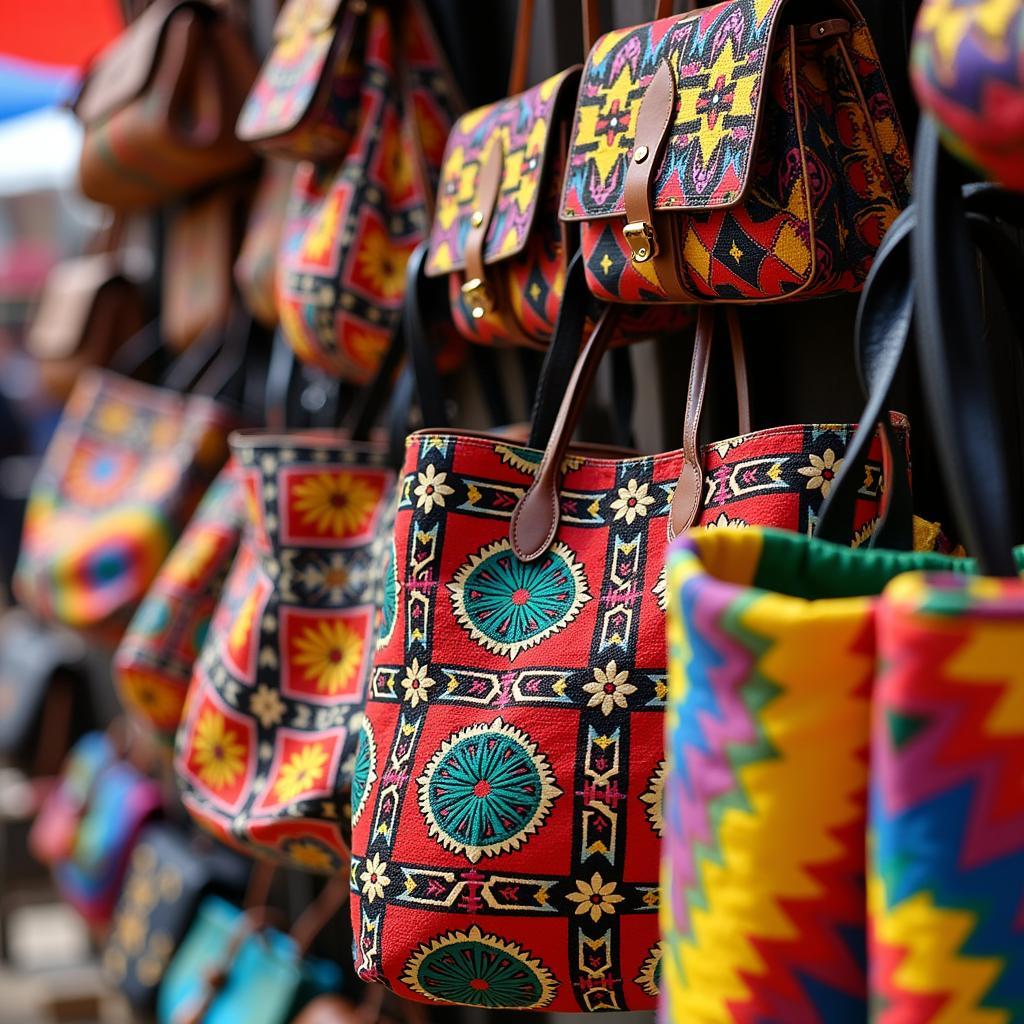Exploring the Rich World of African Music Instruments
African Music Instruments are integral to the continent’s rich cultural tapestry, playing a vital role in storytelling, ceremonies, and celebrations. From the vibrant rhythms of the djembe to the melodic strains of the kora, these instruments offer a captivating glimpse into the diverse musical traditions of Africa. This exploration delves into the fascinating world of African music instruments, showcasing their unique designs, cultural significance, and the captivating sounds they produce.
A Symphony of Sounds: Diverse Instruments Across the Continent
Africa’s vastness is reflected in its diverse musical landscape, with each region boasting its own unique instruments and musical styles. These instruments, often crafted from natural materials like wood, gourds, and animal skins, are not merely tools for creating music; they are extensions of the cultures they represent. African instruments for kids can be a great starting point to introduce young ones to the beauty of these instruments. They are often simplified versions of traditional instruments, making them easy to learn and play.
Percussion Instruments: The Heartbeat of African Music
Percussion instruments form the backbone of many African musical traditions. The djembe, a goblet-shaped drum originating from West Africa, is renowned for its powerful and versatile sound. Similarly, the talking drum, with its variable pitch, mimics the tones and rhythms of spoken language, allowing for complex communication through music. Other percussion instruments like rattles, bells, and xylophones add layers of rhythmic complexity, creating a rich and dynamic soundscape.
String Instruments: Weaving Melodies and Narratives
String instruments in Africa, like the kora, a 21-stringed harp-lute, and the ngoni, a smaller lute-like instrument, often accompany storytelling and poetic recitations. These instruments produce delicate and evocative melodies, weaving intricate narratives that have been passed down through generations. The musical bow, a simple yet powerful instrument, is another example of the ingenuity of African instrument makers.
Wind Instruments: From Flutes to Horns
Wind instruments play a significant role in various African ceremonies and rituals. The kudu horn, made from the horn of the kudu antelope, is used for signaling and communication across long distances. Flutes, crafted from wood or bamboo, produce haunting melodies that evoke a sense of connection to nature. These wind instruments, often adorned with intricate carvings, are not just musical instruments; they are works of art that reflect the craftsmanship and artistic sensibilities of their creators. You can find more resources about african folk music instruments.
The Cultural Significance of African Music Instruments
African music instruments are deeply intertwined with the cultural fabric of the continent. They are used in rituals, ceremonies, storytelling, and social gatherings, playing a vital role in preserving and transmitting cultural heritage. Music is not merely entertainment in Africa; it is a powerful form of communication, expression, and connection to the spiritual realm. African instruments images provide a visual journey into the beauty and craftsmanship of these instruments.
Preserving and Celebrating African Musical Heritage
The preservation of traditional African music and instruments is crucial for maintaining the continent’s rich cultural heritage. Efforts are being made to document and archive these traditions, ensuring that they are passed on to future generations. Music schools and cultural centers are playing a vital role in teaching young people about the importance of their musical heritage. More information about African American musical heritage can be found at african american musical instruments.
Conclusion: The Enduring Power of African Music
African music instruments offer a captivating glimpse into the diverse and vibrant cultures of the continent. From the rhythmic pulse of the djembe to the melodic whispers of the kora, these instruments tell stories, preserve traditions, and connect people to their heritage. Exploring the world of African music instruments is a journey of discovery, revealing the enduring power of music to transcend boundaries and unite people through shared experiences.
FAQ
-
What are some common African music instruments?
Some common instruments include the djembe, kora, mbira, and talking drum. -
What materials are African music instruments made from?
Common materials include wood, gourds, animal skins, and metal. -
What is the cultural significance of African music?
Music plays a vital role in rituals, ceremonies, storytelling, and social gatherings. -
How can I learn more about African music instruments?
You can explore online resources, visit museums, and attend cultural events. -
Where can I buy African music instruments?
Specialized music stores and online retailers offer a variety of instruments. -
Are there resources for learning to play African music?
Yes, there are music schools, workshops, and online tutorials available. -
How can I support the preservation of African musical heritage?
Support organizations dedicated to cultural preservation and attend musical events.
Situations and Common Questions
-
Scenario: You’re interested in incorporating African music into your classroom.
- Question: Where can I find educational resources and age-appropriate instruments?
-
Scenario: You want to learn to play the djembe.
- Question: Are there online tutorials or local classes available?
Further Exploration
Explore our other articles on related topics, such as “The History of African Music” and “African Dance Traditions.”
Contact Us
For further assistance or inquiries, please contact us:
Phone: +255768904061
Email: [email protected]
Address: Mbarali DC Mawindi, Kangaga, Tanzania
Our customer service team is available 24/7 to assist you.
